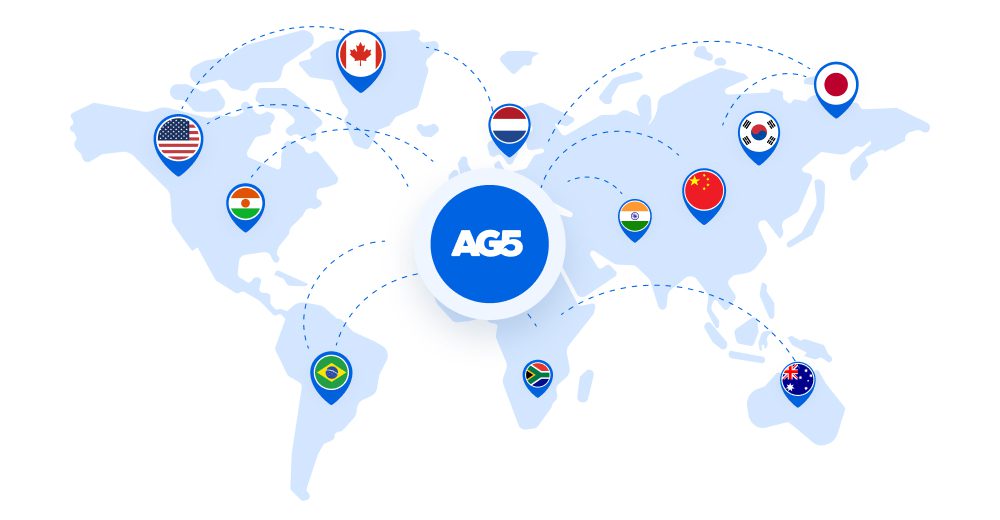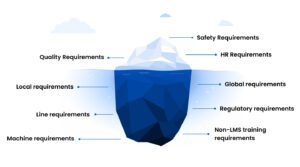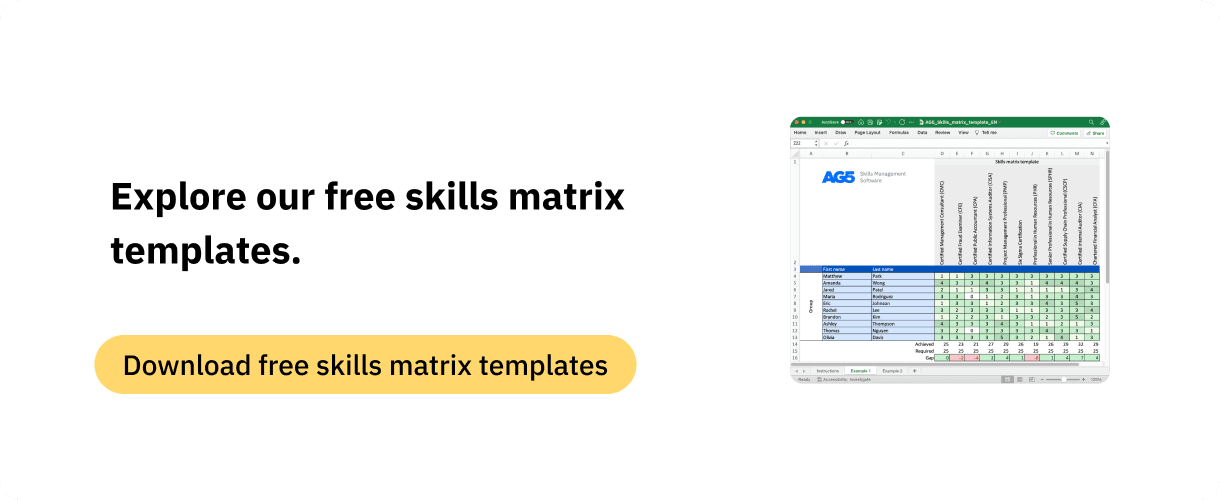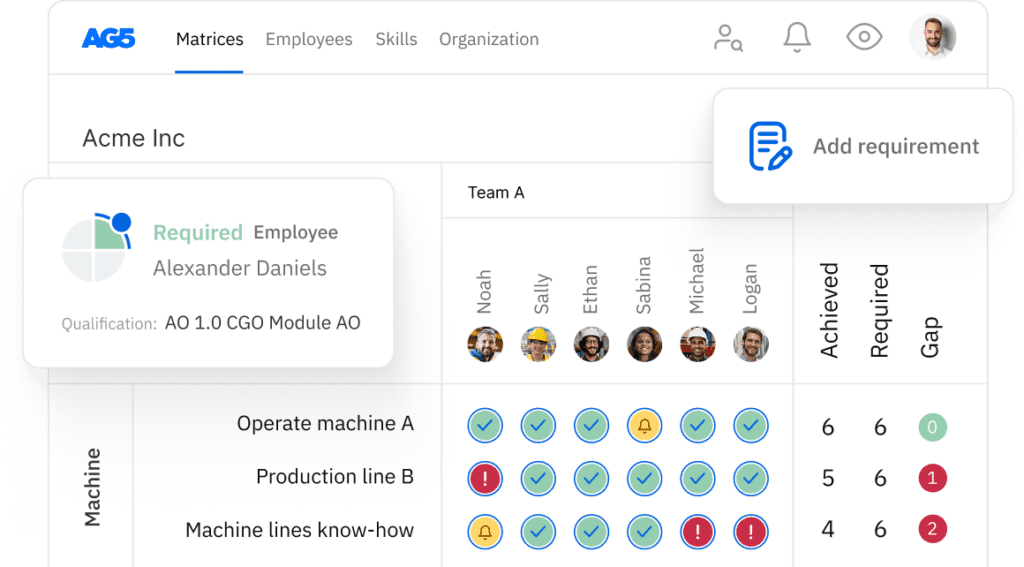Managing global training compliance: Excel vs. AG5
In this article, we take a look at the challenges faced by organizations operating internationally, focusing on compliance with diverse regulations and standards across countries. It delves into how organizations navigate these complexities and maintain productivity, with insights into how AG5’s skills management software can help.

Many organizations have employees and operations in multiple countries. This means they must comply with various regulations that often differ across borders. Additionally, they must be sure to meet regulatory, customer and internal standards, which also may vary from country to country.
Sounds complicated? That’s because it is! So how do organizations ensure that even one organization in one country – much less multiple organizations in multiple countries – stay productive and compliant?
This is the question we will dive into in this article, sharing insights into how enterprise organizations manage their employees’ skills around the globe to stay compliant, as well as how AG5’s skills management software helps them do so.
Why is maintaining global compliance important?Copied
Organizations have various reasons to maintain compliance, such as meeting regulatory, quality, safety, and/or machine-specific standards. Failure to do so could result in avoidable costs due to skills gaps, and high turnover rates due to inadequate employee training.
In the upcoming section, we will outline how some organizations use Excel spreadsheets to achieve global compliance – and the challenges they face in doing so. We’ll then move on to showcase how you can use AG5 to more efficiently and effectively manage global compliance.
The challenges of using Excel to manage global complianceCopied
When enterprise customers choose AG5, they are choosing to manage their employees’ skills in a way that ensures compliance. However, AG5 isn’t the only available solution.
Using Excel, enterprise customers can efficiently keep track of their employees’ skills, requirements, and training history on a team level. Then, during audits, they can present their Excel spreadsheets to auditors, enabling them to easily showcase regulatory compliance.
However, using Excel spreadsheets to manage global compliance gets tricky, especially in organizations in which there are:
- High levels of employee turnover
- Multiple compliance regulation and quality standards
- Specific skill requirements for machines, workstations, and production lines
This is because managing compliance in these situations requires performing multiple activities in the same Excel spreadsheet.
These activities include:
- Manually managing HR data in a separate spreadsheet to keep track of all employees and their shifts, machines, lines, and workstations
- Manually managing LMS data in a separate spreadsheet to keep track of all the training an employee completed
- Manually managing retrained employees in a separate spreadsheet to keep track of their histories
- Manually managing skills requirements from the regulations, quality standards, and specific skill requirements for machines, workstations, and production lines
- Building macros to highlight missing skills, soon-to-be expired skills and expired skills
- Manage all the certification files in a separate folder system
Do you get the point? 😉
Using Excel to manage global compliance is a nightmare for managers.
How Excel increases the risk of errors and prevents organizational alignmentCopied
Apart from what we briefly touched on above, there are two large reasons why using Excel spreadsheets to manage your organization’s global compliance is not a good idea. Let’s take a look.
- Excel spreadsheets are error-prone. Managers need to focus on operations, and thus don’t have time to manage skills in Excel. Therefore, they make trainers, HR, or the Quality department responsible for their Excel spreadsheets. This tremendously increases the risk of error due to the increased amount of stakeholders working in the same file.
- Excel spreadsheets don’t promote organizational alignment. HR, Quality, and Operations departments have their own interests, which can lead them only managing their own structures and data. This increases the risk of an operation not being fully compliant.
Both of the above are common issues we see when discussing AG5’s solution with new customers. As such, highlighting the reasoning behind them is important.
In an organization, various departments such as HR, quality, and operations may recognize the importance of managing skills. Each department may have distinct goals, and from a compliance and skills management perspective, they may differ in their skill requirements. For instance:
- HR may maintain skill requirements based on their own structures, such as roles and cost centers.
- The Quality department may manage skill requirements from a quality standpoint, ensuring the organization meets quality standards based on regulatory requirements for machines and processes.
- The Operations department faces a high level of complexity, as it needs to meet various standards set by different departments, including HR, Safety, Quality, and Compliance. It is responsible for managing the skills of their workforce, which must comply with all the skill requirements set by any department. More importantly, the Operations department manages requirements that are not in the scope of HR, Quality, or Compliance, such as skill requirements based on machines, lines, and workstation structures.
Of course, there is a certain degree of overlap in departmental skills management. But there is also a clear difference in objectives and skill requirement structures between them.
The point here is that these complex skill requirements are often managed by managers in Excel. Can you imagine the risk of human error – and the resulting lack of organizational alignment – while managing such complexity?

So far, we are outlining the situation on a team level. However, a global organization needs to be compliant on both a team and a global level – encompassing every operational site around the world.
In our global rollouts, we see that every site in every country has mastered Excel and manages the skill of their employees in complex Excel sheets. These range from one-sheet to 40-plus-sheet Excel files. We encounter data errors in every file – the more files and large matrices, the more errors.
In the next section, we will spotlight the AG5 feature that is specifically built to replace all the Excel sheets with a single system – a system that enables efficient and effective skills management, and helps ensure global compliance.

Managing global compliance with AG5’s skills management platformCopied
AG5 is built for compliance on a team and global level. In particular, our Global Skills feature allows organizations to maintain both global and local compliance.
However, organizations interested in using AG5 to maintain global standards face a big challenge: the change that their organizations must undergo to adapt to the new system. Often, because of the complexity of their organizations, they are concerned about the implementation of a system like AG5. This is understandable.
Fortunately, we have helped many organizations roll out global solutions. We have done this effectively and efficiently without wasting time, effort, or budget.
How? With a phased implementation approach rather than a big bang approach.
Going global with AG5’s phased implementation approachCopied
In global rollouts, we start with your organizational location that has the most complex skills management needs. Instead of concurrently addressing multiple locations, we methodically tackle each location one at a time.
This allows us to make a small initial change – and enables your global implementation team to run a pilot to identify best practices before the rollout continues.
After the first rollout, which is done in collaboration with your global implementation team, we will have learned the best approach for additional locations or countries. This allows us to increase the effectiveness and efficiency of the implementation as we progress through the following rollouts.
During the implementation of AG5 at your organization’s first location, we launch AG5 for the local site and the global AG5 system.
- In the global AG5 system, the global standards will be managed and shared with the local AG5 system, which is only accessible by the local site.
- The global AG5 system is only accessible to the global team. This allows your organization to set your global HR, Quality, Safety, and Regulatory standards with the complex structures on which all standards are based.
The benefits of such a setup include:
- Global requirements are synchronized in real time with the local AG5 system
- Global requirements can co-exist with local standards (i.e. local regulations)
- Global requirements can be managed separately from local AG5 systems
- Local standards can be managed separately from the global system
- Typical Excel pain points no longer exist
After the first location’s rollout is complete, we proceed with onboarding all the other local sites onto our platform, then integrating them into your global system.
This approach helps your organization to replace all of our complex Excel spreadsheets, step by step. It also decreases the complexity of and speeds up the implementation.
Additionally, it leads to you gradually increasing the efficiency and effectiveness of your skills management strategy throughout your entire organization. This, in turn, leads to your achieving global compliance.
How to achieve global compliance ASAP with AG5Copied
Do you want to become globally compliant as soon as possible? Let’s talk – we’re eager to show you how fast we can make it happen! It’s a surprise for every single customer!
Still not convinced? Join our live webinar as our expert speaker will walk you through a typical client’s transformative journey, from spreadsheet struggle to seamless control with AG5.
Simplify skills management with a chat
Curious about AG5? Let’s talk. Book a commitment-free intro call. Whether you’re considering or just curious about what AG5 has to offer. If we click, we’ll plan a detailed demo, tailored for you.
Why book an intro call?
- Understand your challenges: Your situation is unique. We get it.
- Explore possibilities: See how AG5 fits your goals.
- Next steps: Ready to dive deeper? Let’s schedule a demo.
Ready to explore a smarter way to manage skills? Click below to select a convenient time for you.
Use AG5 to identify skill gaps
Say goodbye to Excel matrices. Start using AG5’s plug and play skill matrix software.
ISO27001 certified
Start your 14-day free trial

